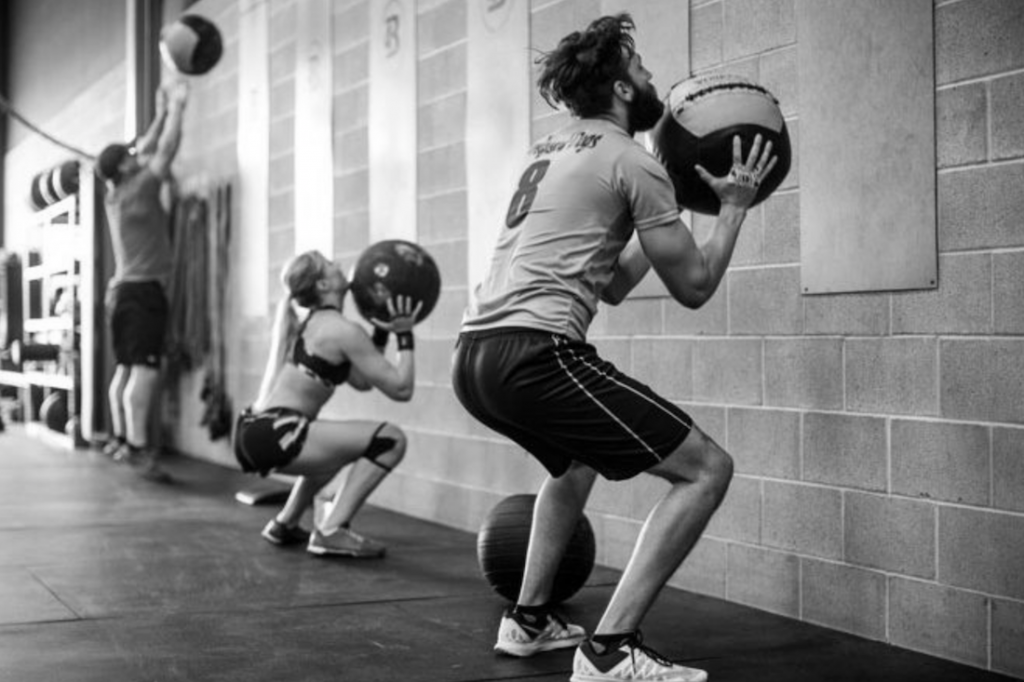
This article was published in January 2016.
By Rob Shaul
I started feeling my knees walking down the stairs in my late 30’s. It was just walking downstairs, and other than that occasional issue, my knees were naturally lubed up and ready to go.
I’ve never had a knee injury, but have trained my entire adolescent and adult life – running, lifting, biking, and for the past 12 years, my own programming. As well, I’ve been an active mountain athlete – mountain running, backcountry hunting, trail running, fast packing, fly fishing, skiing, backcountry skiing, nordic skiing, etc.
I’m 52 now, and 7 years ago, at 45, things worsened. I began to feel my knees at the beginning of training sessions. Nothing too terrible, and for a time I wore neoprene knee sleeves to help them get warmed up.
They are worse now, and unless I’m training or running, my knees are always stiff and painful from arthritis. I’ve tried glucosamine, joint juice, ibuprofen and prescription arthritis medicine – all to little effect. It takes longer for my knees to warm up, and sometimes, they don’t and I suffer through.
I might not be unusual for someone my age, who’s also lived an active life. As well, I’m not sure my training over the years has made things worse.
Anecdotally, I know men my age who’ve been sedentary their entire lives and also have arthritic knees. I also know men my age who have been lifelong mountain professionals or career tactical athletes and move pain-free.
Interestingly, I’ve done a bazillion push ups and bench presses and pull ups and other upper body exercises over the years and my shoulders aren’t arthritic at all. Just my knees.
Never the less, my own knees have me concerned about the long-term effects of training – especially high volume, lightly or moderately loaded squatting and lunging – on knee health.
I’ve come recently to refer to this type of training as “Garbage Reps” – not heavy enough to build strength, and generally designed as part of a work capacity effort.
Here would be a work capacity event example from my own programming:
10 Rounds for Time
10x Back Squat @ 95/135#
5x Scotty Bobs @ 15/25#
10x Box Jumps
10x Ankles to Bar
Those 100x Back Squats are the “Garbage Reps.” Years ago I began to consciously eliminate this type of effort from MTI work capacity programming.
High volume bodyweight squats and lunges are fine, box jumps are okay, and you’ll see us deploy lots of sprinting and shuttle sprints in our work capacity programming. We don’t need high volume, lightly loaded squats or lunges for metabolic conditioning. Sprinting and other exercises get the job done and are perhaps more transferable to the real world.
We still squat and lunge – but I’m trying to do it heavy – or moderately heavy – to build strength.
It’s important to understand that if you use your body hard like I have, there’s going to be wear and tear. Often tactical athletes write me about their aches and pains and blame the job. It’s not the job’s fault – it’s part of the cost for a high-speed life at the tip of the spear and for using your body daily to make a living. And tactical athletes aren’t unique here – talk to any old cowboy, carpenter, roofer, plumber, cement layer, mason … and you’ll find “industrial athletes” who also suffer from wear and tear from active work lives.
I’m not sure anyone would be in any better shape if they’d worked a sedentary job for 20 years – but they certainly wouldn’t have had the incredible experiences or relationships which come through choosing a tactical or mountain life.
We do what we can to make our athletes as durable as possible to avoid or mitigate job-related injury. As well, we need to think about the long-term effects of our training methodologies and exercise selections – and work against undoing harm getting athletes fit.
That being said, tactical and mountain athletes have high-impact, dangerous professions, and proper training for these occupations must reflect this reality in impact and intensity. Saving your knees for your 40’s doesn’t help much if you get shot or injured at work because you weren’t mission-direct enough for the job’s physical demands. Mountain movement means uphill endurance under load – where every step up is essentially a loaded lunge, and loaded movement down – even more impact on joints.
Tactical athletes are loaded with body armor, weapons, bunker gear, duty belts … this constant load impacts low back, hip, knee, shoulder and ankle health and wear and tear … but that’s the job.
However, there’s no reason to artificially increase this impact with “garbage reps” in fitness programming when we can achieve the same fitness effect with other means.
Questions, Comments, Feedback? Please comment below …
You Might Also Like MTI’s SF45 Packet, Designed for Older Tactical and Other High Impact Athletes
